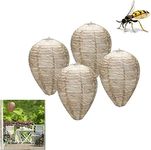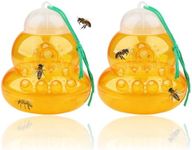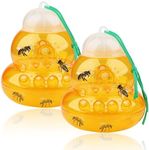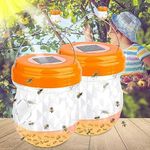Buying Guide for the Best Bee Repellents
Choosing the right bee repellent is important for ensuring your comfort and safety when spending time outdoors, especially in areas where bees are common. The best product for you will depend on your specific needs, such as whether you want to protect yourself, your pets, or your outdoor spaces. Understanding the key features of bee repellents will help you make an informed decision and select a product that is both effective and safe for your intended use.Active IngredientsThe active ingredient is the main component that repels bees. Common options include natural oils like citronella, eucalyptus, or peppermint, as well as synthetic chemicals. Natural ingredients are often preferred for personal use or around children and pets, as they tend to be gentler and less likely to cause irritation. Synthetic options may offer longer-lasting protection but can sometimes have stronger odors or cause skin sensitivity. When choosing, consider who will be exposed to the repellent and whether you prefer a natural or chemical-based solution.
Formulation TypeBee repellents come in various forms, such as sprays, lotions, candles, and wearable devices. Sprays and lotions are good for direct application to skin or clothing, providing personal protection. Candles and diffusers are better for creating a bee-free zone in a specific area, like a patio or picnic spot. Wearable devices, such as bracelets or clips, offer convenience and are suitable for children or those who prefer not to apply products to their skin. Your choice should depend on how and where you plan to use the repellent.
Duration of EffectivenessThis refers to how long the repellent remains effective after application. Some products offer protection for just a couple of hours, while others can last much longer. Shorter durations may require frequent reapplication, which can be inconvenient during long outdoor activities. If you need all-day protection, look for products with extended effectiveness. Always check the label for recommended reapplication intervals and consider your planned activity length when choosing.
Safety and SensitivitySafety is crucial, especially if you have sensitive skin, allergies, or will be using the product around children or pets. Some repellents are specifically labeled as safe for sensitive skin or for use around animals. Always read the safety instructions and ingredient list to avoid potential irritants or allergens. If you have concerns, opt for products with fewer chemicals or those that are dermatologically tested.
ScentThe scent of a bee repellent can affect your comfort and enjoyment. Some repellents have strong or lingering odors, which may be unpleasant for some people. Others are formulated to be unscented or have mild, natural fragrances. If you are sensitive to smells or plan to use the repellent in social settings, consider choosing a product with a subtle or pleasant scent.
Application AreaConsider whether you need to protect a person, a group, or a specific area. Personal repellents are designed for direct application, while area repellents like candles or diffusers are better for keeping bees away from outdoor spaces. If you are hosting a gathering or want to protect a larger area, area repellents may be more effective. For hiking or individual use, personal repellents are more practical.
















